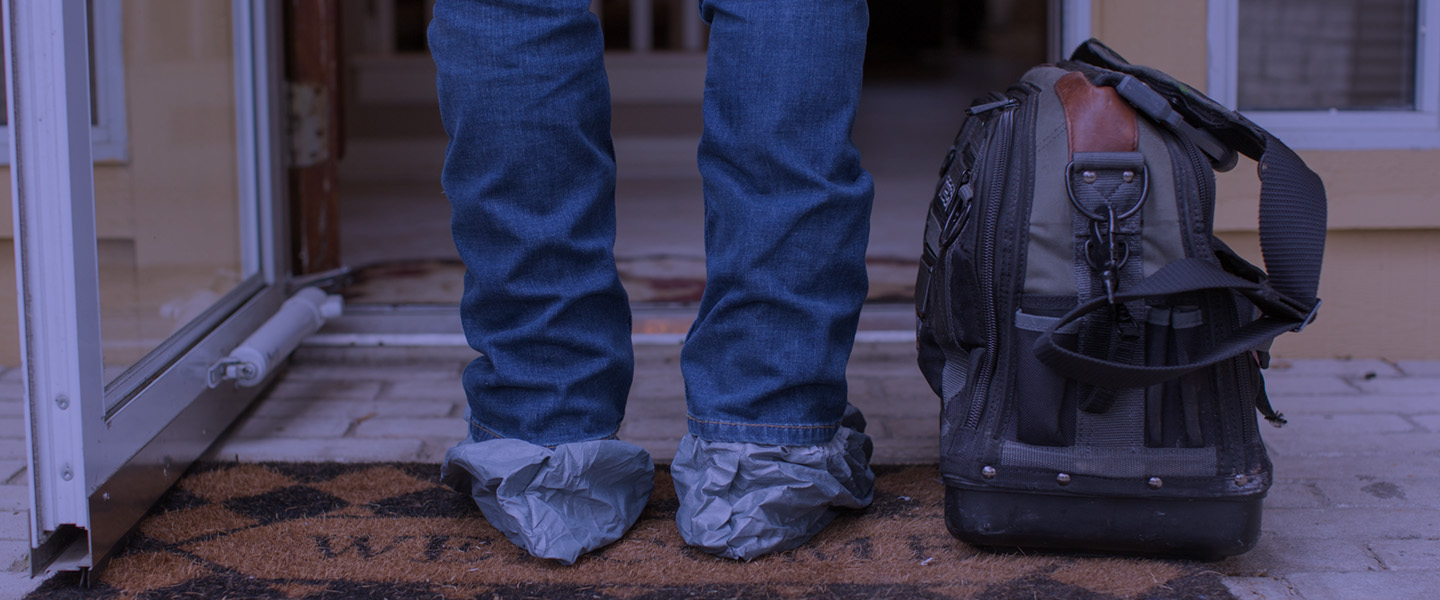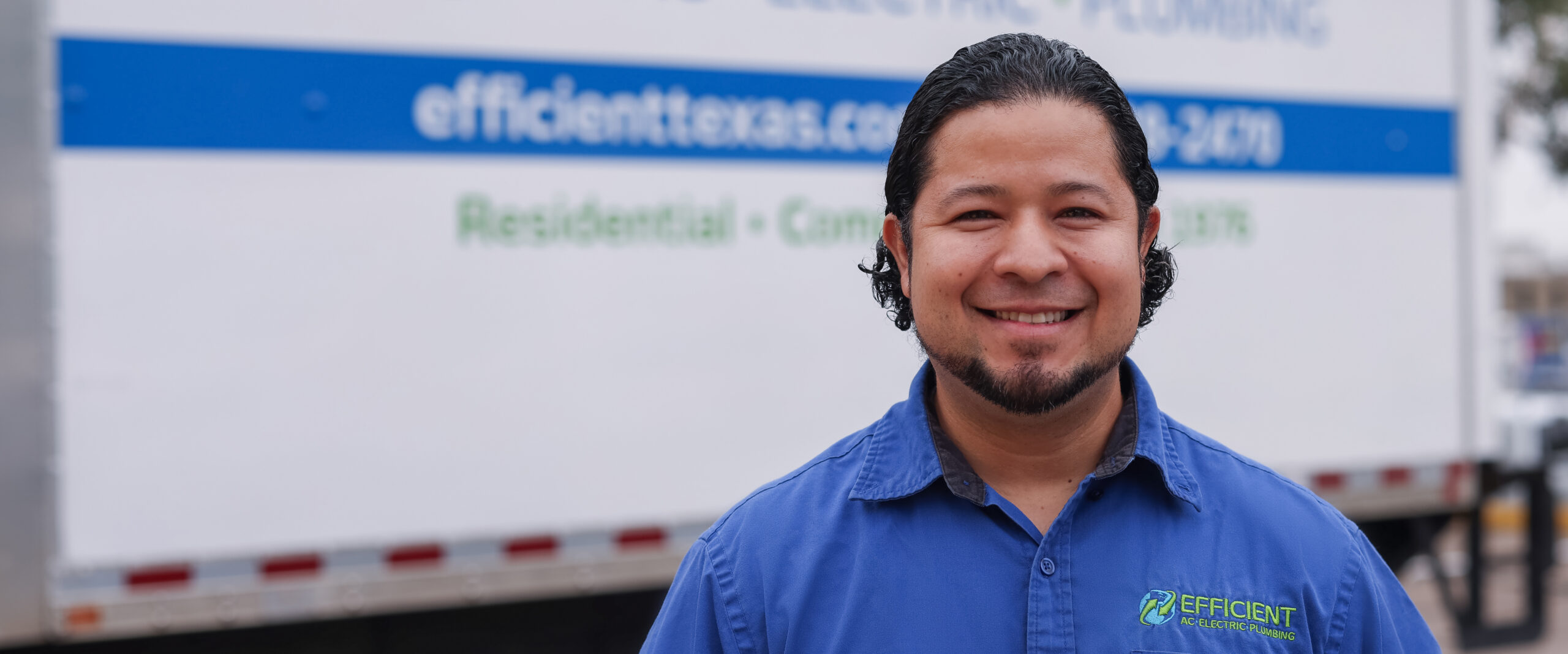0% for 36 Months or 10% off a New AC. Learn More >
Geothermal Heating Systems in Austin, Texas
Occasionally, we get inquiries on geothermal HVAC systems, either for new residential construction or a retrofit to existing air-cooled equipment. The manufacturers’ literature on these systems touts very high efficiency levels and long equipment life. These benefits can be achieved through a well-executed installation. However, recent drilling costs, complexities and space for well fields have become issues for installation. As a company, Efficient AC, Electric & Plumbing is happy to maintain, repair or replace any existing geothermal system; however we no longer handle new installations or retrofits from air-cooled equipment.
If you already have a well-designed geothermal loop and system with older equipment, maintaining the existing system and replacing machines when needed is typically the best option for continued heating and cooling performance.
The landscape of available equipment in the entire HVAC market has changed rapidly over the last decade. The current, more conventional systems, including standard residential split systems, have very high efficiencies and low operating costs. There are numerous brands of variable refrigerant systems – variable refrigerant flow (VRF) and variable refrigerant volume (VRV), which are essentially the same technology available, such as Toshiba/Carrier, Daikin, Mitsubishi, LG, Samsung and others. These solutions will come close to the practical utility cost of running a geothermal system with lower installation, maintenance and replacement cost. The remainder of this article will cover the considerations and benefits of geothermal systems.
How Geothermal Heating/Cooling Systems Work
Geothermal systems use small amounts of electricity to transfer heat to and from the earth to your home. They do this transfer through underground pipes, which are collectively referred to as a “loop.” Water circulates through the loop, carrying heat to and from an indoor heat pump. In the cooler months, the water absorbs the earth’s heat, and the loop carries it to the heat pump so it can be used to heat your home.
In the warmer months, the system extracts the heat from your home and deposits it into the ground. The ground cools the water and carries it back to the heat pump, so it can be used to air condition your home.
During the cooling cycle, your geothermal system can also store enough heat to efficiently produce some or all of your hot water – for free. It does this by taking the heat it removes from your home and delivering it to a heater instead of depositing it in the ground.
Geothermal vs. Conventional Equipment
- Efficiency – A geothermal heat pump is also referred to as a ground-source heat pump. Conventional central AC systems are air-source, meaning they transfer heat to and from the outdoor air to your home. Because geothermal heating systems rely on more moderate temperatures than conventional systems, they are able to condition homes more efficiently. In other words, they don’t have to work as hard because they have a smaller temperature gap to make up. For this reason, switching from a conventional air conditioner or heat pump to a geothermal system typically reduces the cost of heating and cooling a home.
- Aesthetics – Geothermal heating systems do not require above-ground equipment outside because they draw their heat from the ground instead of the air. Not having any visible outdoor equipment frees up yard space and removes what most people consider an eyesore.
- Lifespan – Geothermal manufacturers advertise a 20-year lifespan, but we’re not typically seeing a lifespan materially different from properly installed air-cooled equipment.
- Noise – Geothermal heat pumps are among the quietest heating and cooling units on the market. This is in part because, unlike conventional systems, they don’t have outdoor machines and are housed in highly insulated “cabinets.” Indoors, you’ll hear a geothermal heat pump about as much as you hear your refrigerator or freezer, similar to the high end variable speed air cooled conventional equipment.
- Space – When considering a geothermal system, you must take space into account. A professional well driller will need to put the underground loop system in place, which means you must have enough space for a drill rig to enter the installation area. You also need to have enough land to accommodate the size loop system you need. Typically, a well driller will drill one hole for each ton of geothermal equipment, and these holes need to be 20 feet apart.
- Retrofit vs. New Construction – While it’s possible to retrofit existing homes with geothermal systems, it’s easier and more convenient to install them during new construction – when there’s other construction equipment on your property, there are fewer barriers to accessing the installation area and there is no landscaping yet in place. When you include a geothermal system in the construction of a new home, you also get the added benefit of being able to roll the cost into your mortgage.
- Cost – While geothermal heating systems do offer a variety of benefits, they also come with a higher upfront cost than a conventional system. Lower utility costs do offset some of the investment; however, typically it is difficult to recover all of it. Maintenance and replacement costs can be higher as well.
If your existing geothermal system needs to be maintained, repaired or replaced, we can help. If you don’t currently have geothermal and are looking to retrofit your property with a high efficiency system, we can help you identify the best fit for your needs and budget. Call us at 512-501-2275 or fill out our form to schedule a service call or complimentary replacement consultation.

